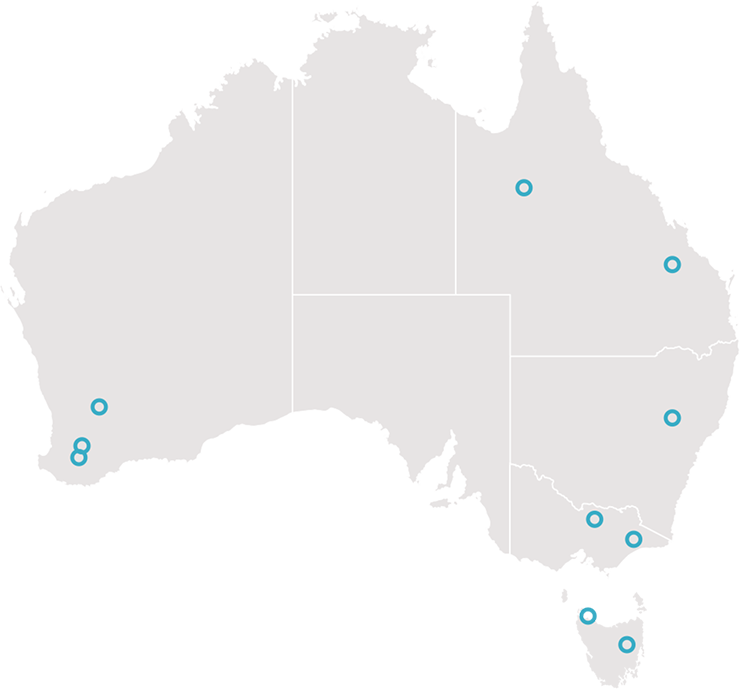Get set for climate-smart farming

The locations of 10 properties across Australia, which were the focus of the NEXUS project to explore the links between on-farm productivity, profitability and greenhouse gas (GHG) emissions.
Producers are better equipped to adapt to and mitigate the impact of future climates through the NEXUS project, which explored the links between on-farm productivity, profitability and greenhouse gas (GHG) emissions.
Researchers used climate modelling for 2030 and 2050 at 10 sites across Australia. They identified how producers could implement adaptation strategies – such as supplementation, changing lambing dates and planting trees – to move towards more profitable and environmentally sustainable production systems.
The project was a collaboration between MLA, the University of Tasmania (UTAS), University of Melbourne, University of Southern Queensland, CSIRO, the Department of Primary Industries and Regional Development in WA, and many other partners.
UTAS Associate Professor Matthew Harrison said a key aim was to help producers understand how they could adapt to potential impacts of extreme weather events and climate change for their region.
“We assessed profitability, productivity and social aspects of proposed adaptations, as future farm systems not only need to ensure food security, they also need to be economically competitive and socially acceptable,” Matthew said.
Adapting for the future
The project was guided by three questions:
- What would the future climate look like in any given region?
- How would this change the way the farm operates?
- What should future research, development and extension for livestock farming in Australia address?
These questions underpinned modelling of carbon footprints and GHG emissions under current conditions (baselines) as well as several adaptations to future climates.
“We chose case study farm locations across Australia, ranging from the Midlands of Tasmania to North Queensland, as we wanted coverage of different agro-ecosystems to reflect the diversity of climate zones and enterprise mixes,” Matthew said.
“The proposed changes were codeveloped with the producers to ensure their farming systems would be better adapted to future climates and were reflective of their day-to-day practices.”
Practical steps
NEXUS helped producers understand and prioritise alternative scenarios to reduce emissions, improve current practices and production efficiencies, and explore new opportunities in changing markets.
Researchers used a range of models to assess single adaptations through to packages of individual interventions which were stacked together. For example:
- feeding seaweed (Asparagopsis taxiformis) to reduce methane emissions
- planting trees
- changing lambing dates
- changing stocking rates
- renovating pastures to improve growth
- altering enterprise balance and type.
“Simple changes producers can do which are reasonable and easy to implement was a core part of the modelling,” Matthew said.
“Our research found there are few interventions that are win-win-win in terms of productivity, profitability and GHG emissions.
“However, simple actions like shifting lambing and calving time forward by two weeks, having spatial and climatic diversification in your property locations, and genetic improvement in animal feed conversion efficiency were among the most beneficial to improved productivity and profitability.”
Matthew said producers should start planning now.
“Producers should be thinking about climate change adaptations which are reversible and can be made easily – once these short-term changes are made, longer-term changes aimed at strategic mitigation/adaptation can be made.
“For example, maximum carbon sequestration rates from trees won’t happen until 10–20 years after they’re planted.
“During this time the climate will be changing, so more nimble changes – such as renovating pastures with productive, digestible legumes – can be made. In this way, producers are tactically adjusting towards a longer-term goal,” he said.



